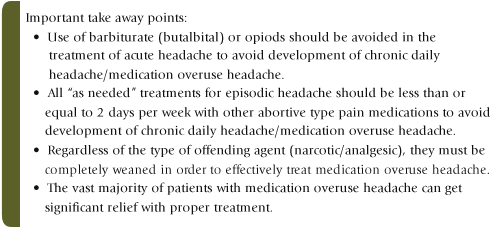Medication Overuse
Headache 2.0
Jon Konzen, DO
Neurology
Chippewa Valley Neurosciences
Eau Claire
In a previous article in the Fall 2009 Healthy Viewpoints, the problem of medication overuse headache was discussed. Several years have now passed and there have been changes in our understanding of the problem, but many of the clinical symptoms and challenges of this form of chronic daily headache still persist.
Chronic daily headache is defined as headache that occurs more
than 15 days per month and lasts for greater than 4 hours a day. Chronic daily headaches affect 4 to 5% of the general population. The term chronic daily headache can define several headache types that have similar qualities. These are sometimes looked at as being equal. Eighty percent of these chronic daily headaches are felt to be due to medication overuse. The other types of chronic daily headache are called chronic migraine or transformed migraine.
There are subtle differences.
Medication overuse headache occurs mainly in people that have a previous known headache history. This history can include migraine headache, tension type headache or cluster headache. These headaches occur more than 15 days per month and are associated with the use of one or more anti-headache medications, usually for a duration more than three months. Prescription medication is used ten or more days of the month, such as the triptans (e.g. Imitrex, Axert, Relpax).
But, it is also important to note that narcotic/barbiturate (e.g. Vicodin, morphine, Demerol, butalbital) use may provoke the formation of medication overuse headache with even less than eight uses per month. In the case of over-the-counter medications (e.g. ibuprofen, aspirin, acetaminophen or combinations of these medications) 10 to 15 uses per month can induce medication overuse headache. Another problem can be the continued use of suboptimal treatment. “I take the medication and it reduces the headache, but does not eliminate it.” This also can lead to induction of medication overuse headache.
Why is proper headache identification important?
With proper identification of headache type, proper treatment and resolution of the problem can occur and is cost effective. The cost of treatment to the patient is much higher for medication overuse headache than patients with episodic headache. Estimates indicate the cost per year per patient is 4.4 times greater ($7,750) for the chronic headache condition than before and episodic migraine headache problem ($1,757).
The cost to employers is also much greater. It costs almost $200
per week for medication overuse headache/chronic migraine for
each man and $90 per week for each woman when compared
with employer costs for each man and woman with occasional headache problems.
How does the overuse of pain medications produce
daily headaches?
Some studies are available now that suggest repeated headache attacks may be associated with changes in the covering of the brain and also iron that may be deposited in brain cells that regulate pain, causing an increase in frequency and duration of headaches. There may also be free radical formation that produces neuronal damage.
How can I tell if my headaches are due to medication overuse headache?
The headaches do have tendencies to vary and change in severity, location, frequency and the quality of the headache. On the other hand, chronic daily migraine headaches tend to be relatively similar, headache after headache. One important point to note is that one can have both chronic daily migraine headaches, as well as medication overuse headaches at the same time. The headaches may tend not to be a typical “right or left sided” headache, but may actually be in an unpredictable location and attributed to another problem, e.g. forehead location equals a sinus headache.
How can I make these type of daily headaches to away?
The good news is that medication overuse headache can and usually does improve. Almost 70% of these type of headaches can resolve with discontinuation of an offending agent. The bad news is that the offending agent, particularly narcotics or barbiturates, must be completely weaned. Also, these headaches can recur with resumption of those abortive type headache medications, even if they are utilized for different purposes (e.g. narcotic use of a broken bone). Again, the presence of previously diagnosed primary headaches such as migraine is a risk factor for relapse.

Dr. Jon Konzen–Pain Clinic of Northwestern Wisconsin
For information or to schedule an appointment:
715-831-0811 | www.oakleafmedical.com
Dr. Konzen sees patients in Eau Claire.